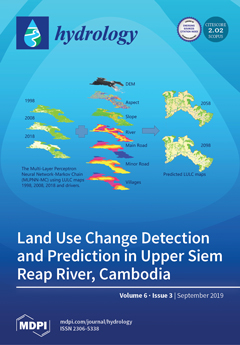Each lake complex must be understood before attempting any regional synthesis leading us to view these water-bodies as indicators of regional climate change. Therefore, in order to improve knowledge of these Mediterranean biotopes, we examined the dependence of the fringes of hygrophilous communities surrounding the water-bodies (green fringes) on their hydrological and geomorphological features. The climate of the western sector of this massif is cryo–oromediterranean, where thawing produces 53 hm
3 of run-off and 11 hm
3 of sub-surface flow. Part of this water is stored in 123 water-bodies located from 2480 to 3200 m a.s.l., 72 of which (58%) are located on the south-facing Mediterranean watershed. The total surface of the water sheet is approximately 170,000 m
2, and volume is approximately 215,000 m
3, of which 140,000 m
3 (65%) are stored in the south-facing water-bodies. Green fringes surrounding 84 water-bodies have a total surface area of approximately 186,000 m
2. Surprisingly, the more xeric Mediterranean watershed holds 58 such fringes (149,000 m
2, 80%) while 26 are found on the Atlantic watershed (38,000 m
2, 20%). Green fringes are mainly associated with small water-bodies (<5000 m
3), which occupy 148,000 m
2 on the Mediterranean watershed, while on the Atlantic side, green fringes occupy 31,000 m
2. Sierra Nevada also has 46 times higher water-efficiency in the smaller water-bodies than in the large ones; 16.4 and 335.8 times higher on the Atlantic and Mediterranean watersheds, respectively. The differences in gradient of the massif hillsides must largely explain this uneven behaviour.
Full article





